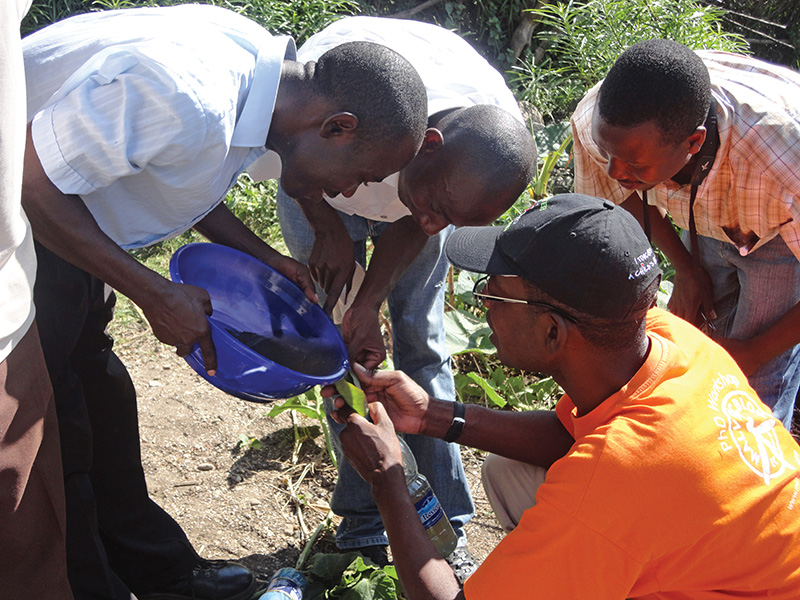Vector-borne diseases and intensification of agriculture
Recent findings by icipe, due to be published in a forthcoming issue of the Centre’s International Journal of Tropical Insect Science, have demonstrated the significant role of larval habitat conditions in determining the distribution patterns of mosquitoes.

The study, conducted in a malaria and arbovirus endemic region in western Kenya, showed that some agricultural practices, such as the use of fertiliser in agriculture, could potentially increase suitability of mosquito breeding habitats; and therefore, aid in the transmission of diseases vectored by Aedes. The researchers found greater proportions of Aedes aegypti mosquito larvae in ammonium and phosphate rich habitats.
The research also revealed that Anopheles mosquitoes not only breed in high temperatures as expected, but also in shaded habitats, which could be associated with increased irrigation agriculture. On the other hand, Culex mosquitoes were more indiscriminate in their choice of breeding sites. These results highlight the need to align control of vector-borne diseases with increasing intensification of agriculture.
This study was funded by research cooperation between the Swedish International Development Cooperation Agency (SIDA); International Development Research Centre (IDRC), Canada, in partnership with the Canadian Centre for DNA Barcoding (CCDB), Canada; and Training Health Researchers into Vocational Excellence (THRiVE) in East Africa, a consortium supported by The Wellcome Trust, UK.

